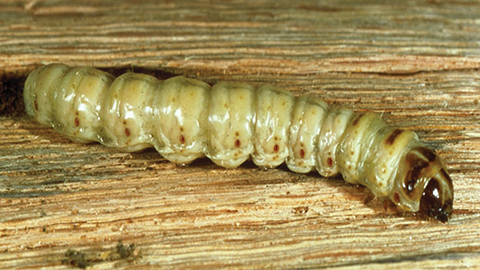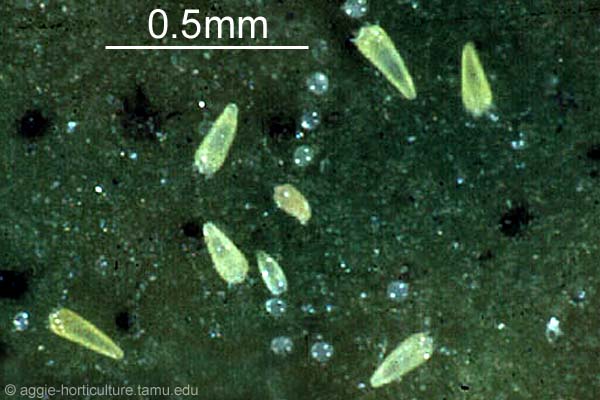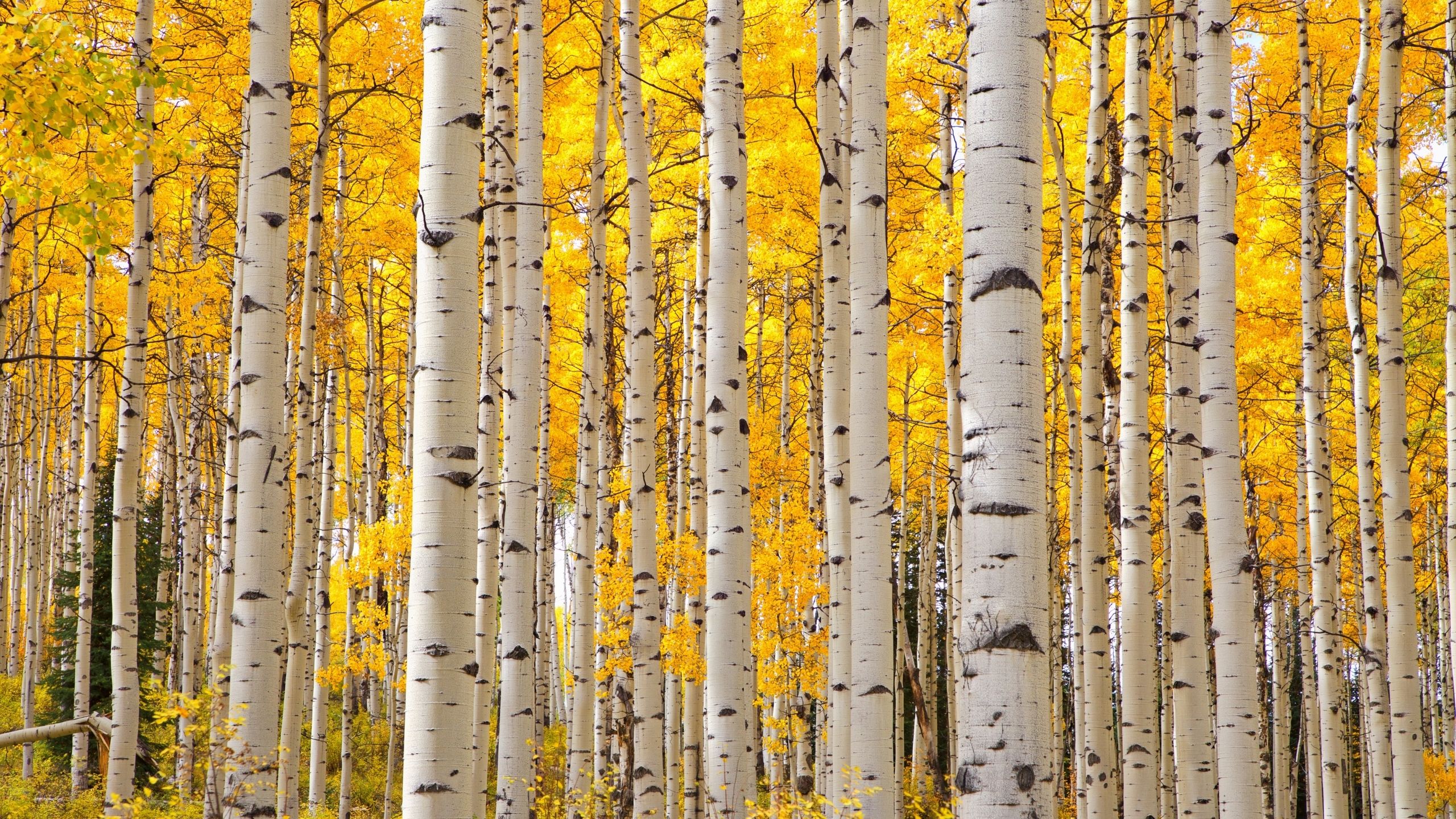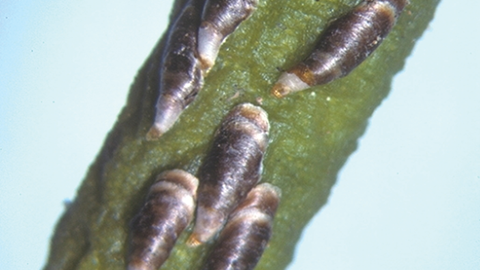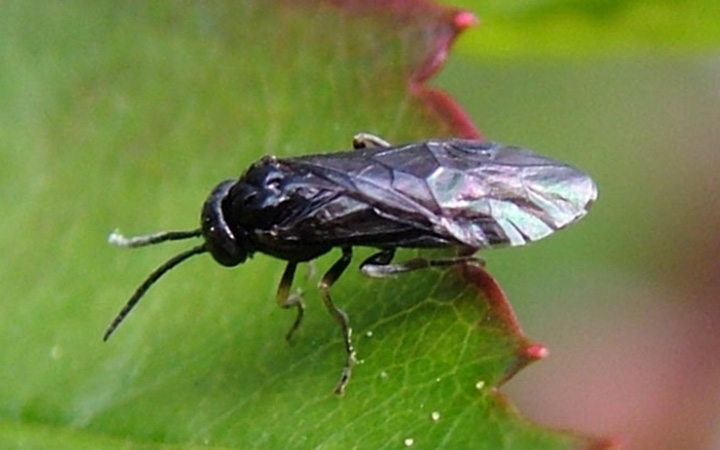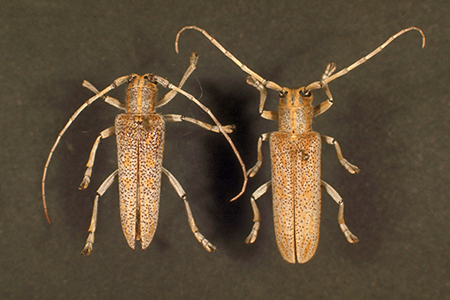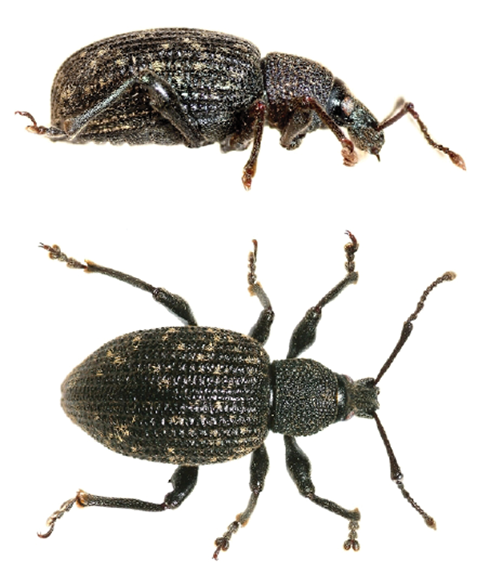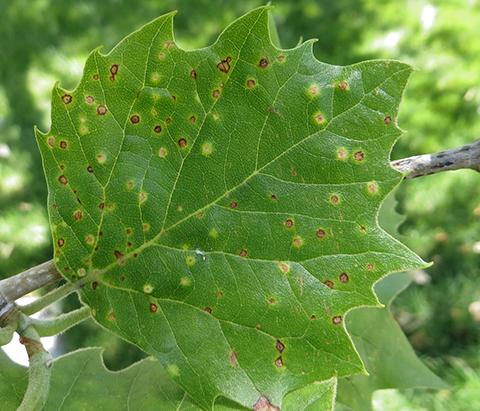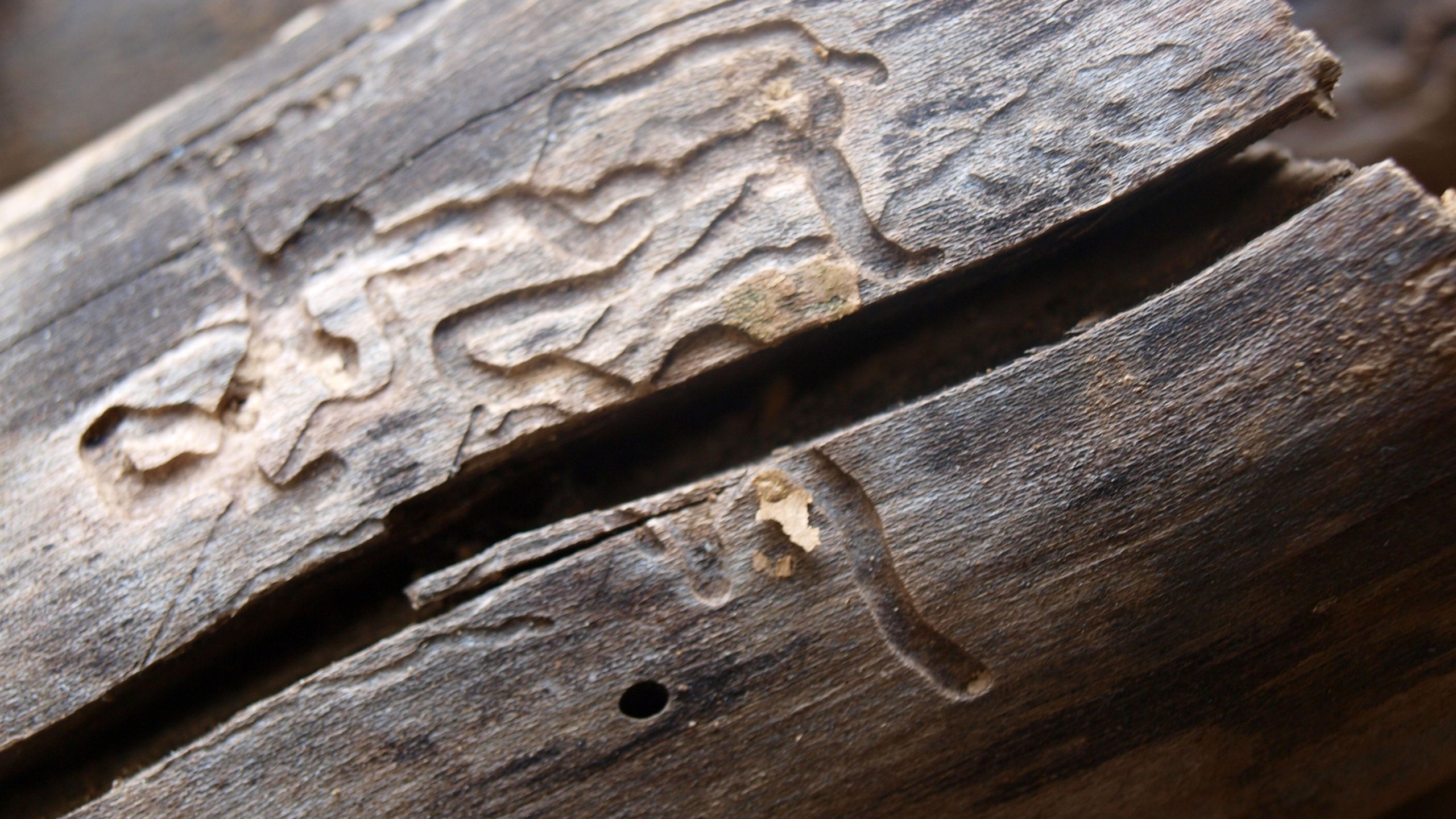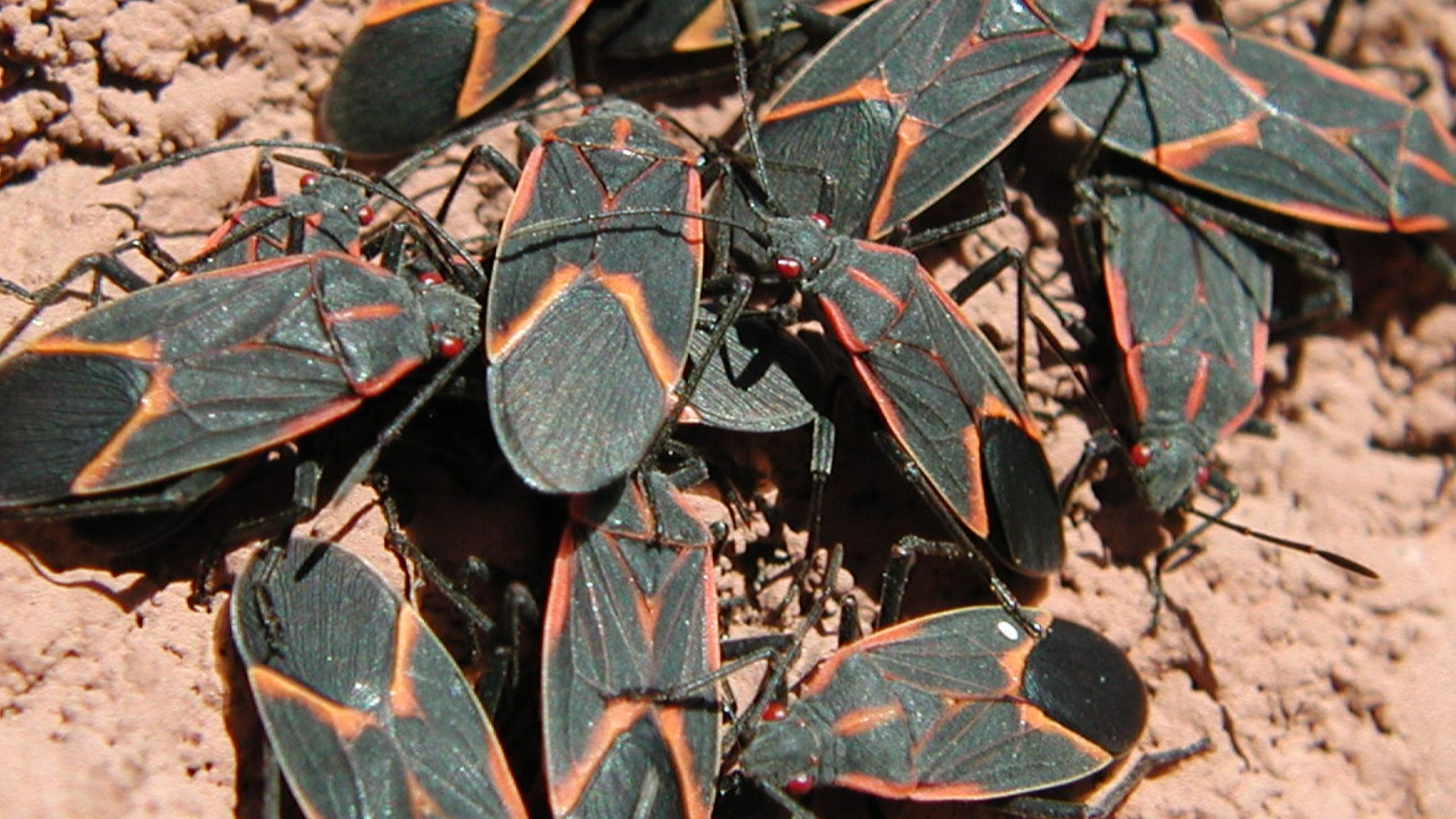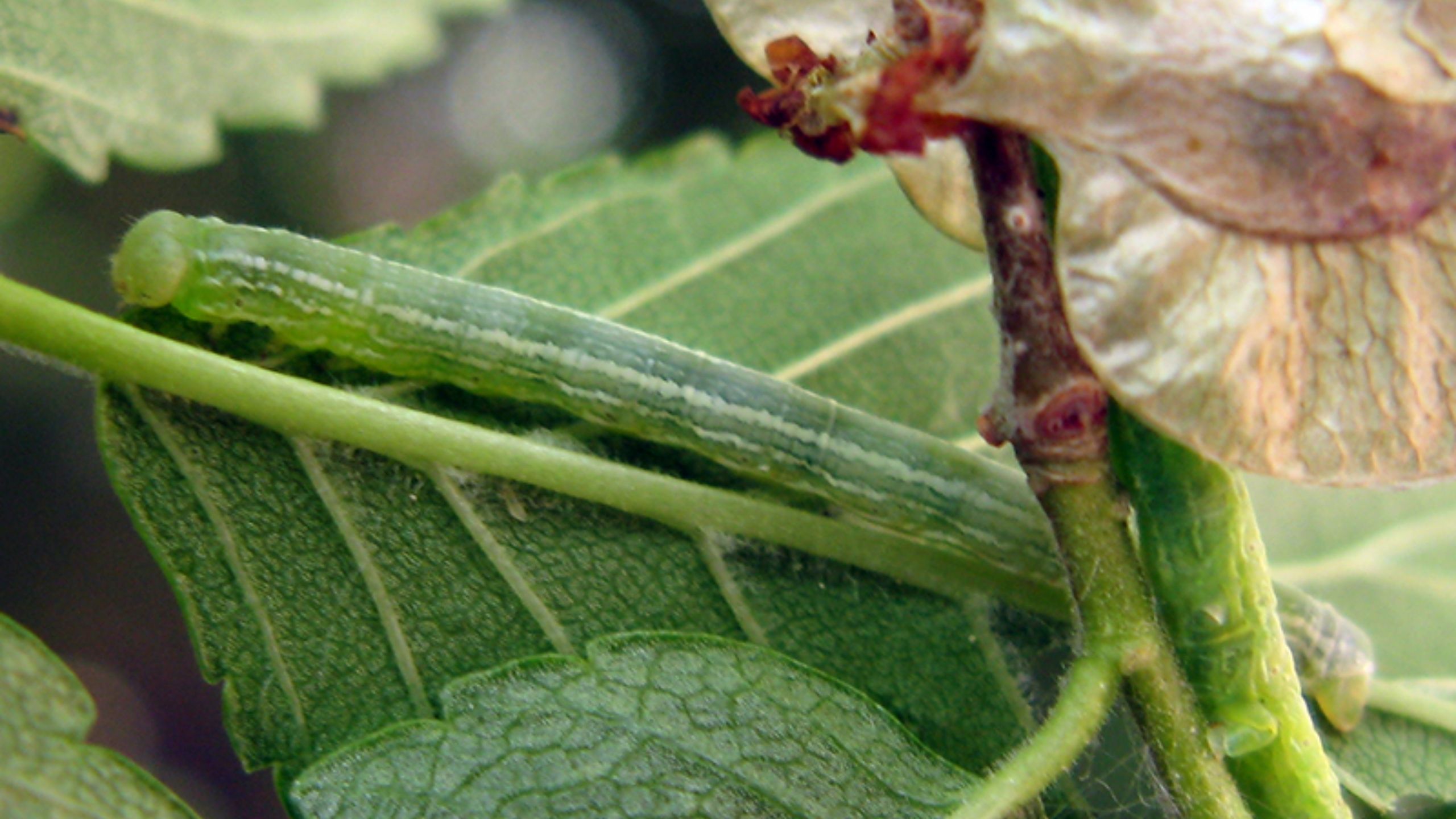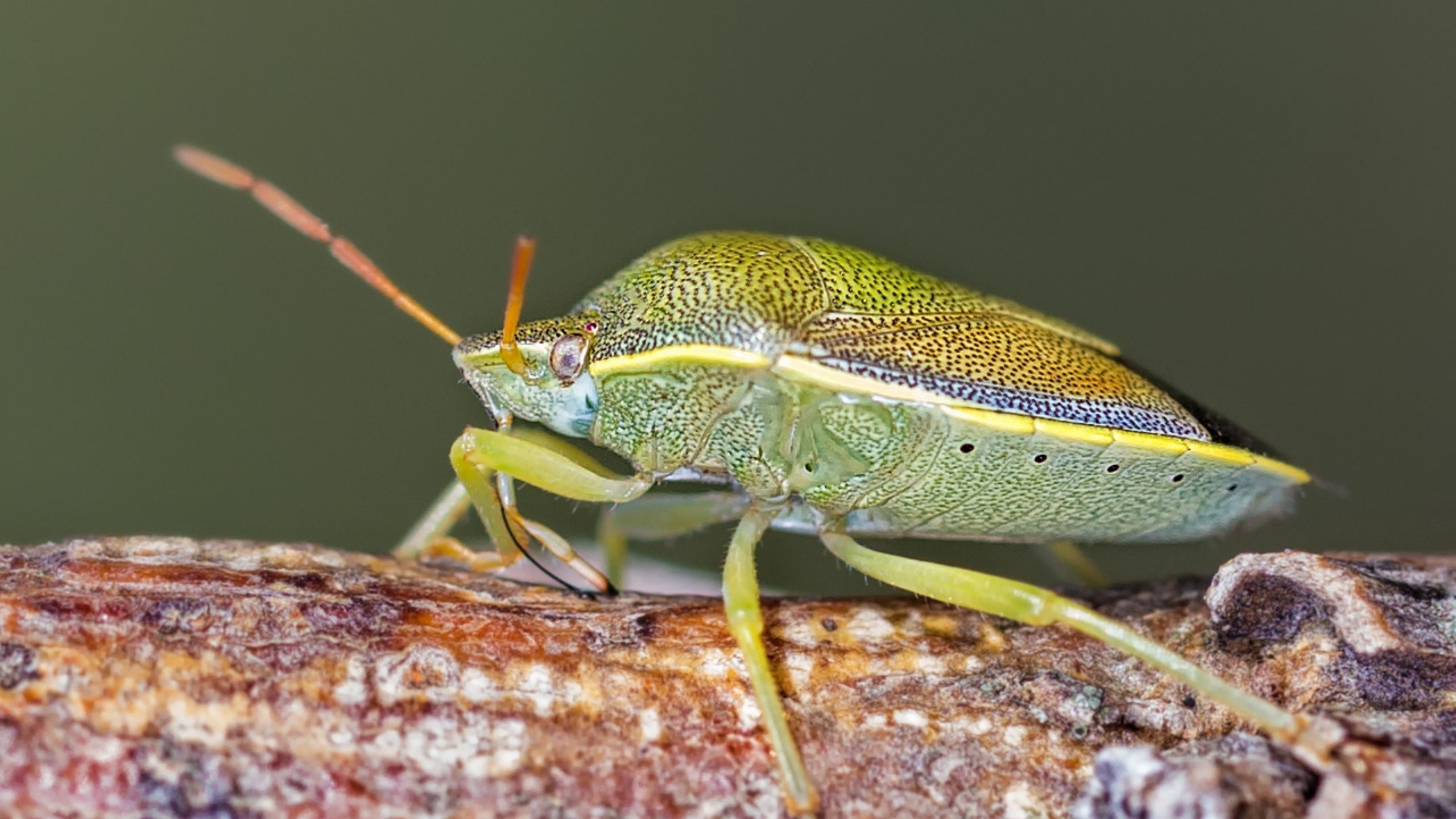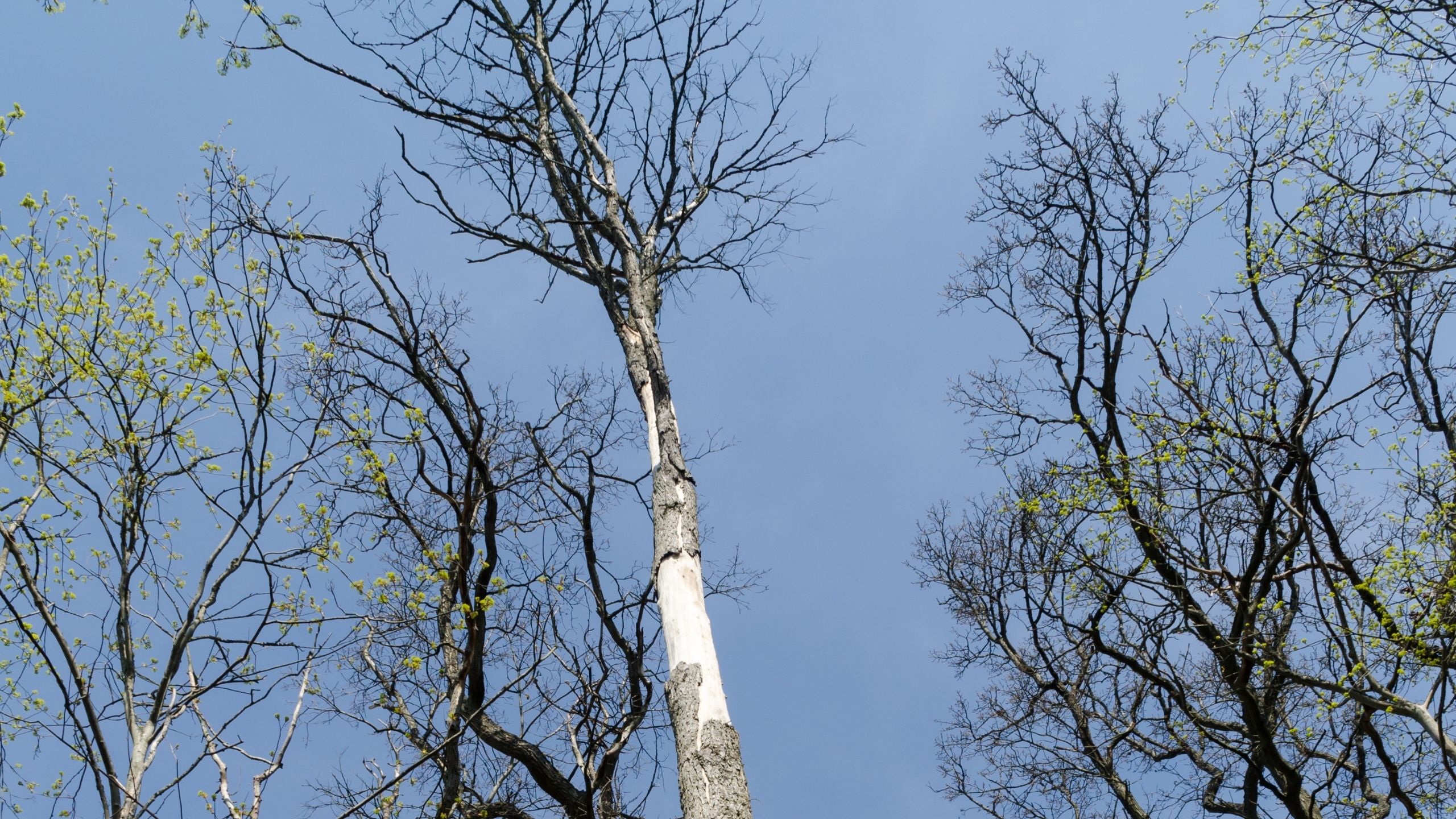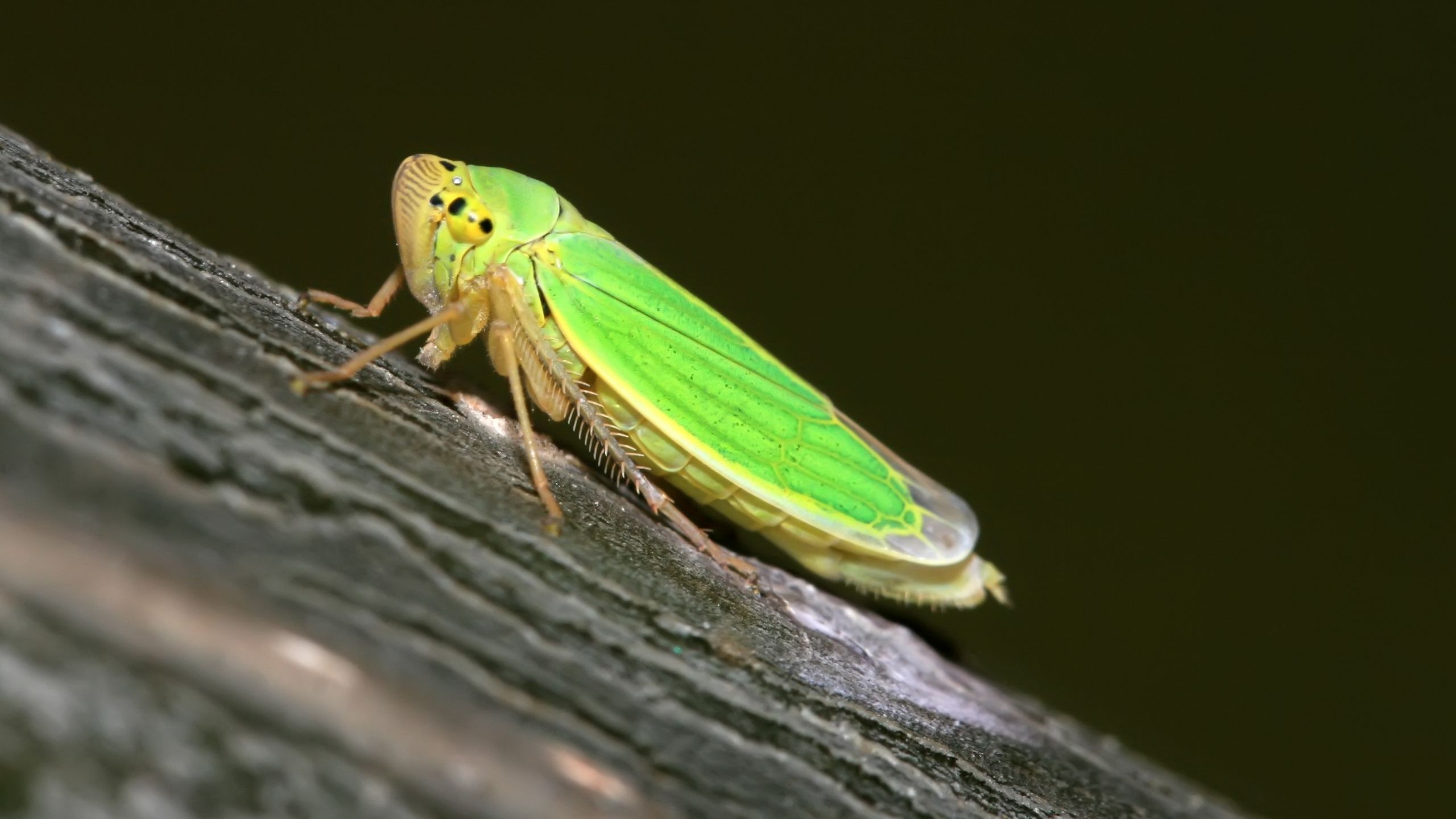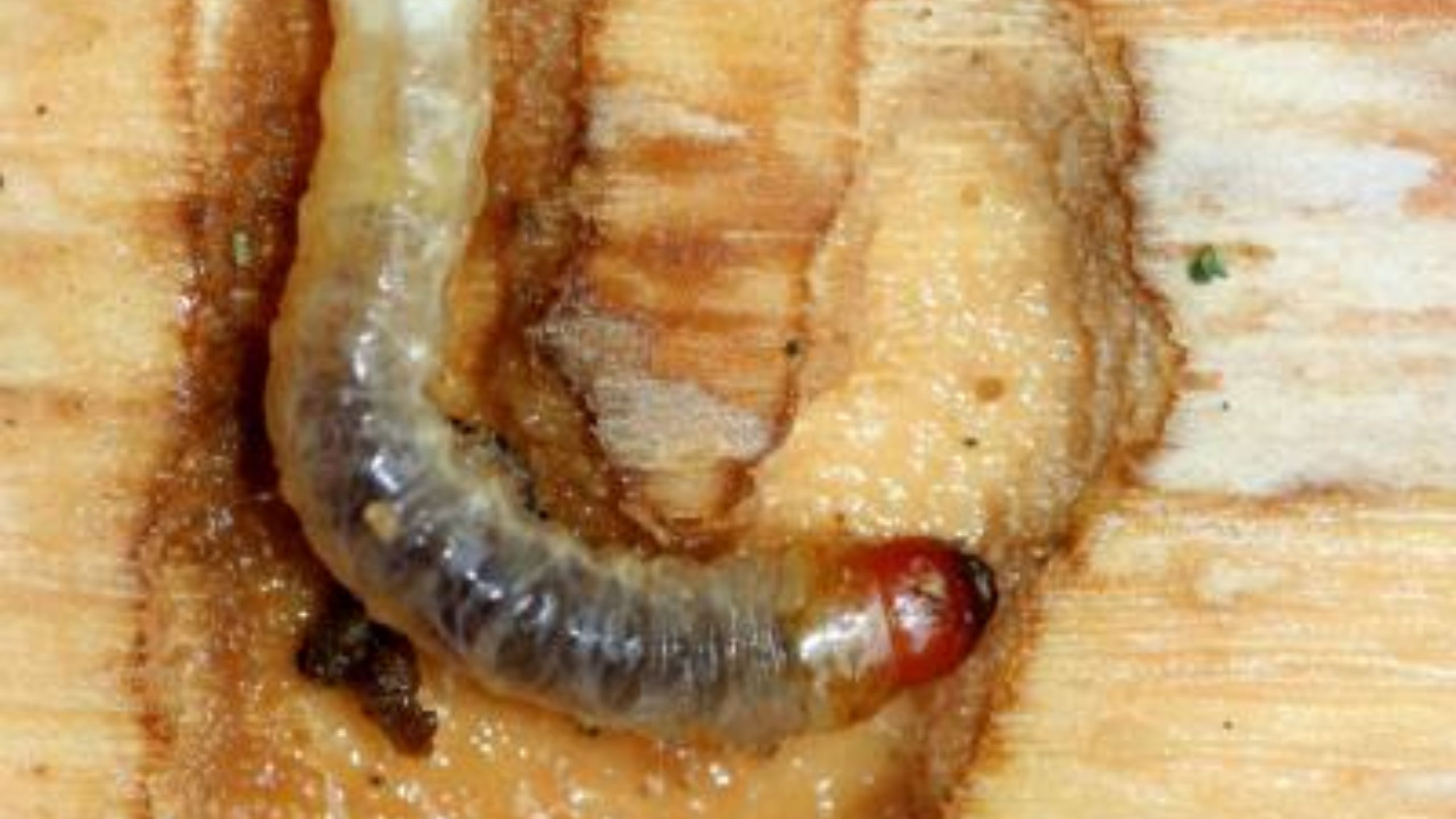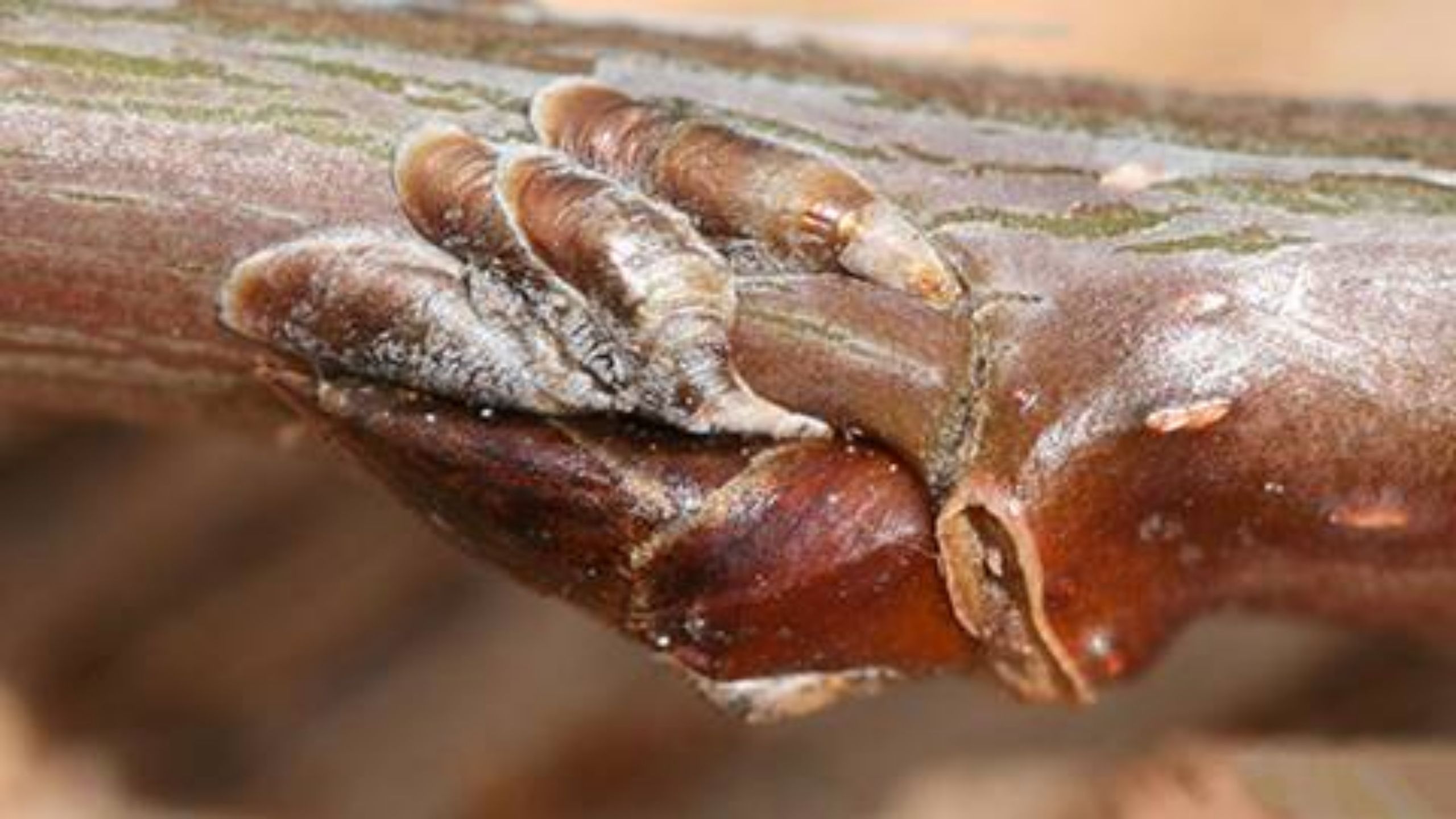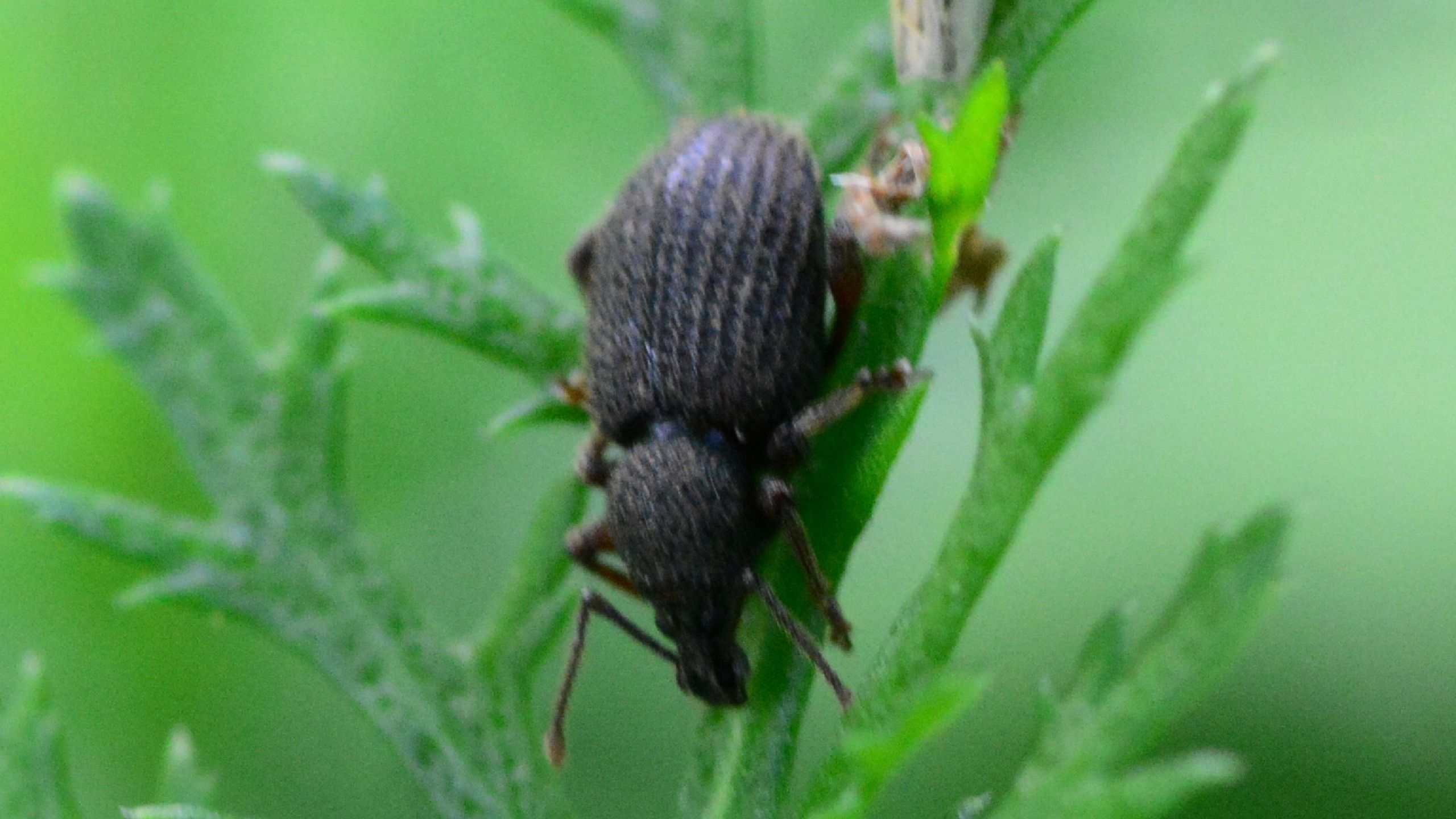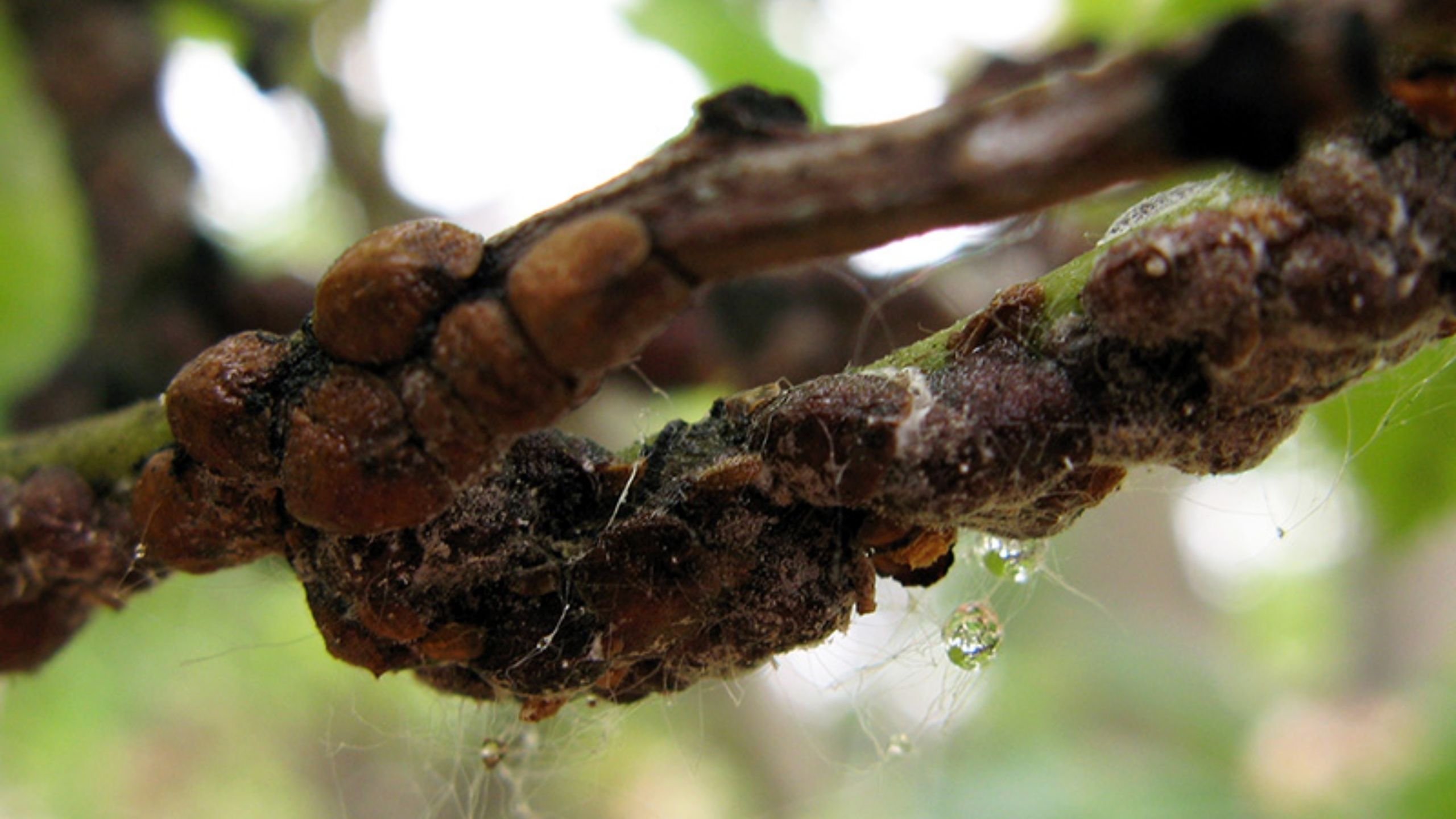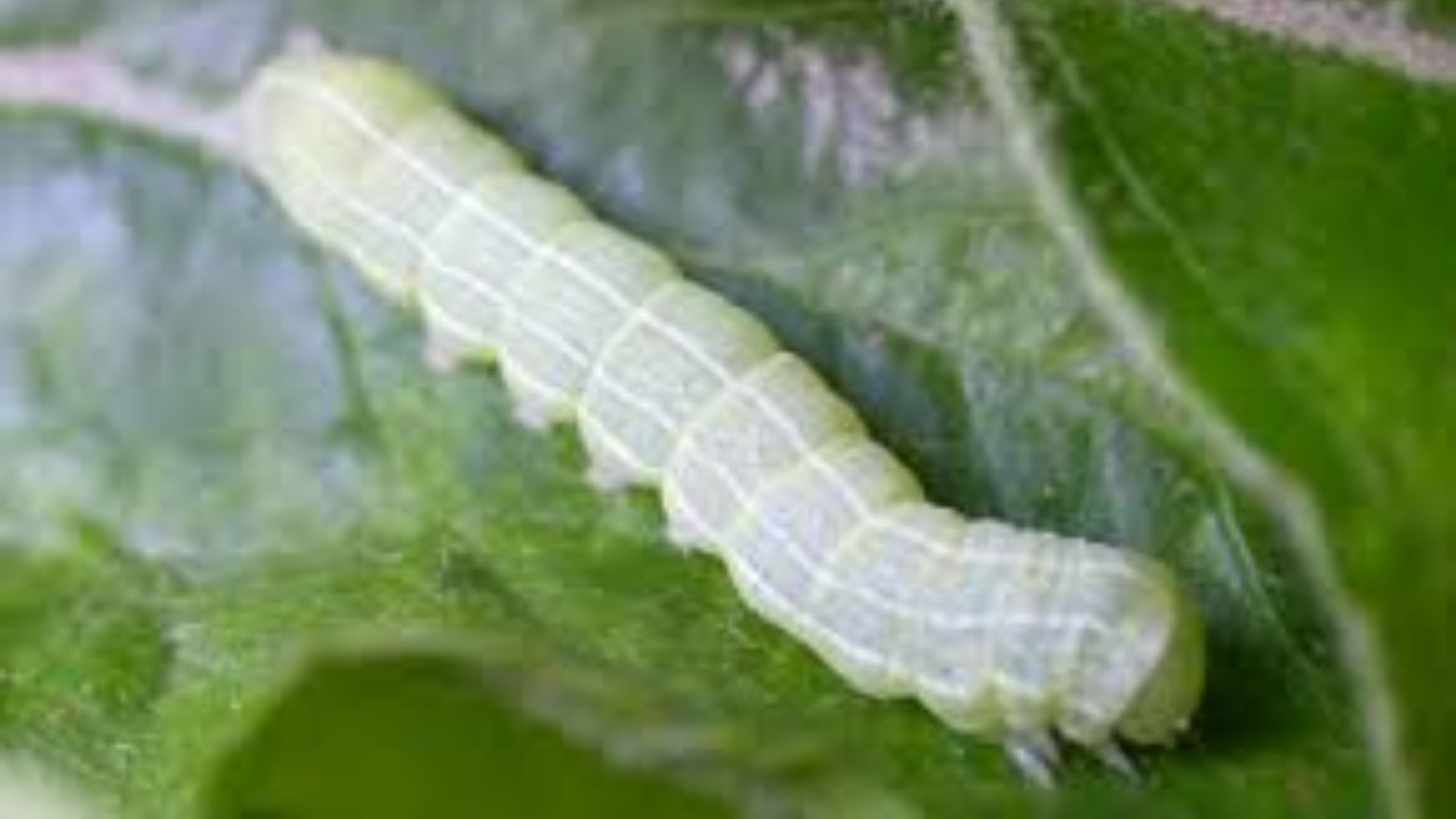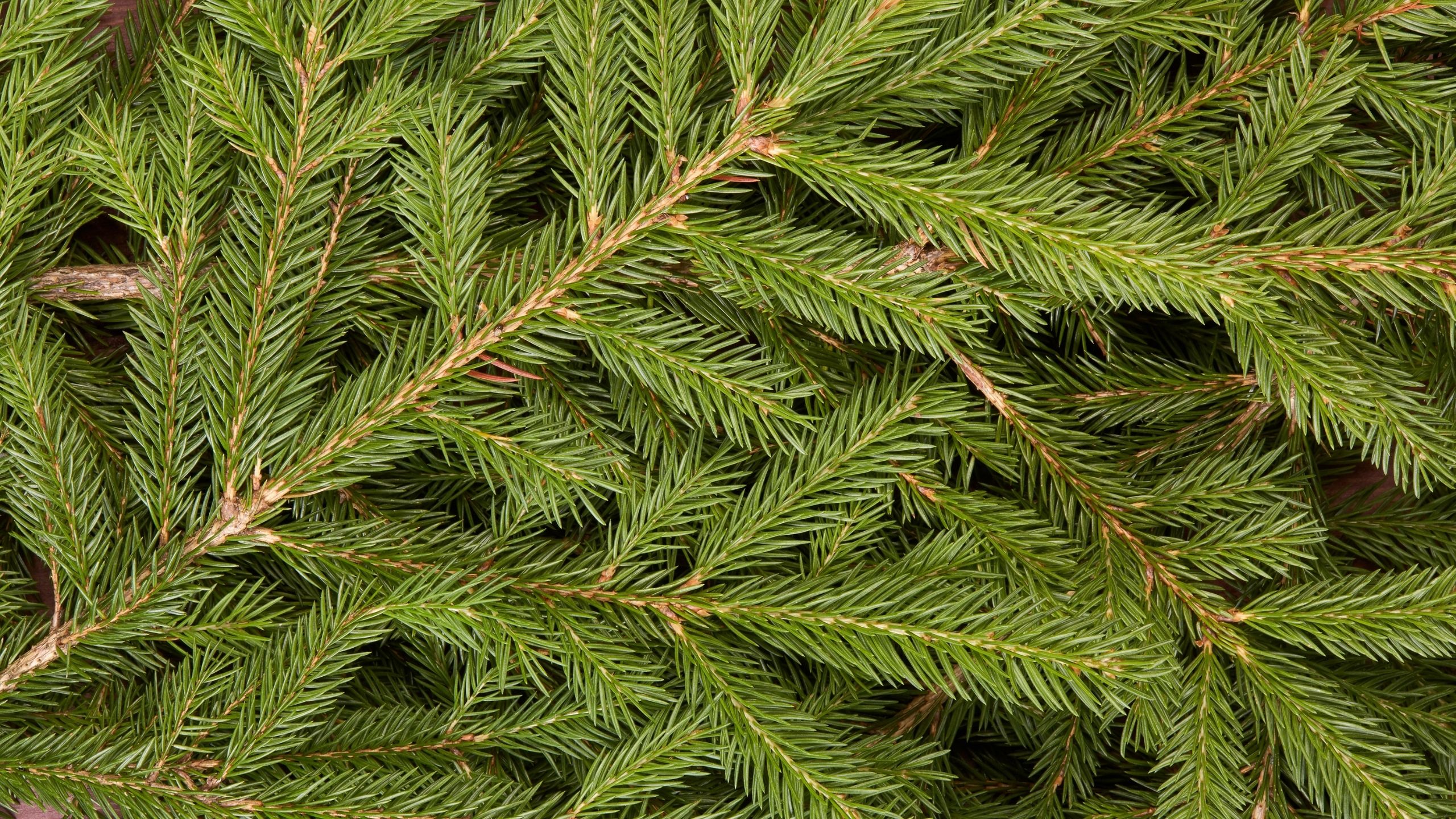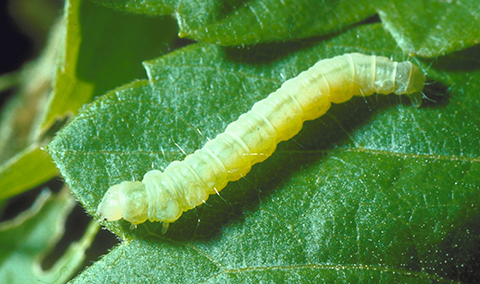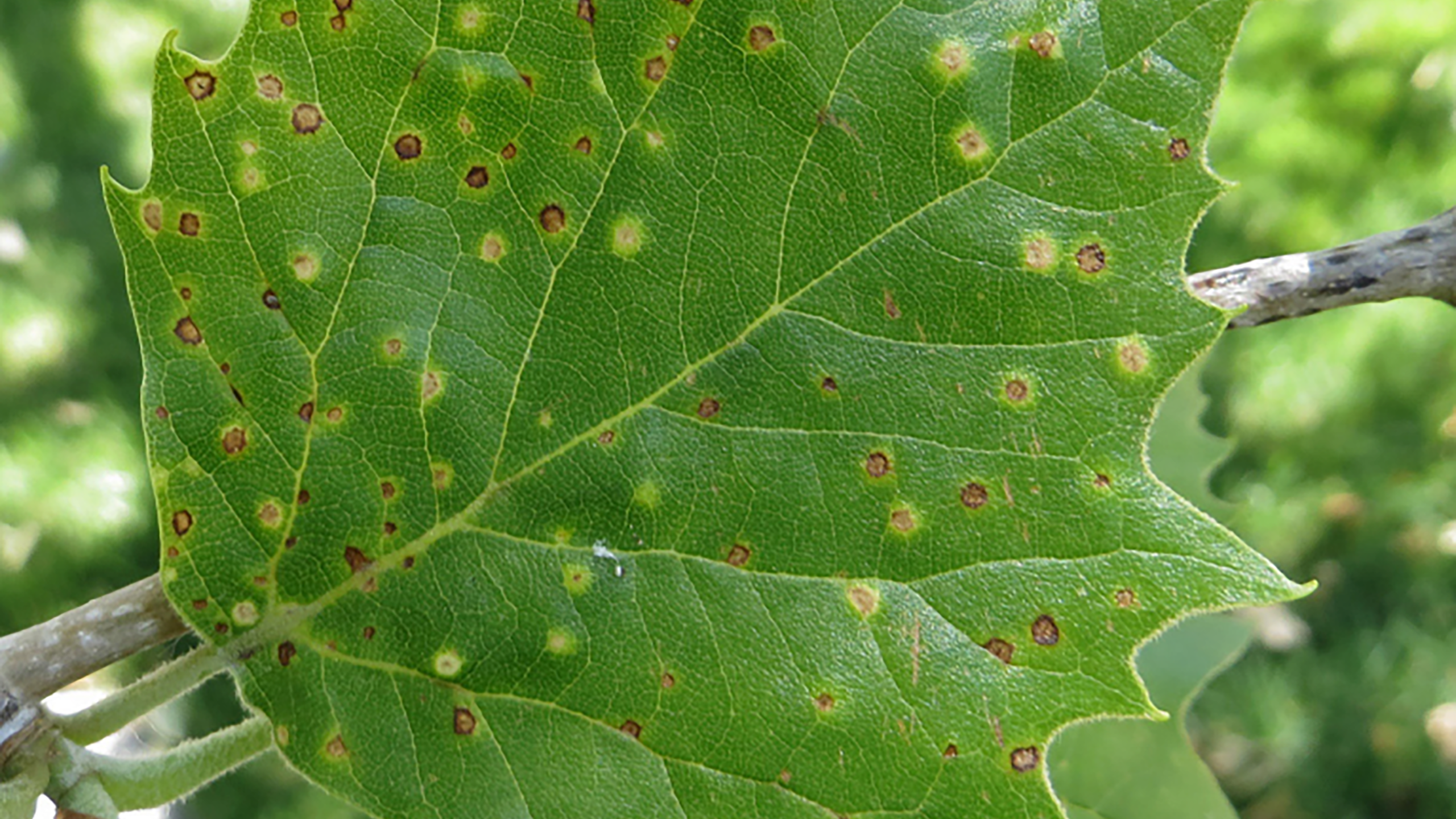Locust Borer
August 2023
Marion Murray, Extension IPM Specialist and Ryan Davis, USU Arthropod Diagnostician (No longer at USU)
Quick Facts
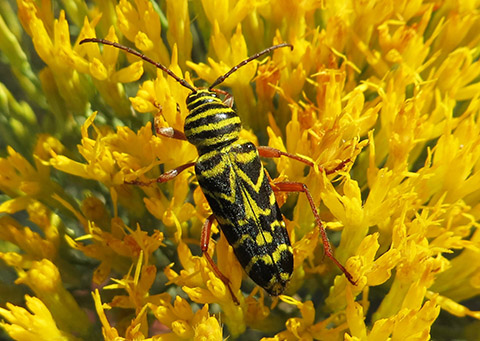
- The adult locust borer is a 3/4 inch long
black beetle with yellow stripes. The legs and
antennae are yellow to reddish. - Black locust is the only host, and trees are
damaged when larvae bore into the wood. - Symptoms include yellow to brown bark
staining, oozing sap, wet spots, yellow
sawdust-like material, and holes. - Healthy trees are less susceptible. Infestations may
warrant an insecticide bark spray or injection.
The locust borer, Megacyllene robiniae, belongs to the longhorned beetle family (Cerambycidae), referring to the long antennae of most of the species in this group. This insect occurs in Eastern Canada and in most of the U.S., wherever its host, black locust, grows. In Utah, locust borer has damaged black locust trees in most northern Utah counties. The only host is black locust; honeylocust and other trees are not affected by this pest.
Description and Life Cycle
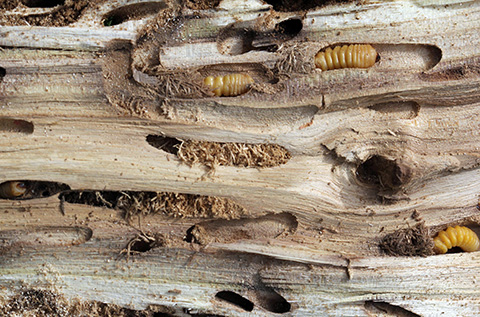

During peak egg-laying in late September, females deposit 100-200 small, white, oval eggs singly or in groups of six to eight in bark crevices and around wounds on the trunk and larger branches. Eggs hatch in 5 to 8 days and the small white larvae tunnel into the inner bark where they spend the winter as first instars. In spring, larvae resume feeding about the time of bud swell. They bore into the sapwood and eventually into the heartwood, producing a tunnel 3 to 4 inches long (Fig. 2).
The cream-colored larvae are about 1 inch long when mature, distinctly segmented, and legless. Movement is accomplished by contraction of the body segments. They have a white, cylindrical body with fine pubescence and a small, reddish-brown head. Each spiracle (respiratory opening) along the segmented abdomen is distinctly brown. As the larvae grow, they frequently return to the surface of the bark and enlarge their tunnels. Most larvae reach full size between mid- July and mid-August. Shortly after, they transform into pupae (a cocoon-like stage) in their tunnels. There is one generation each year.
Symptoms
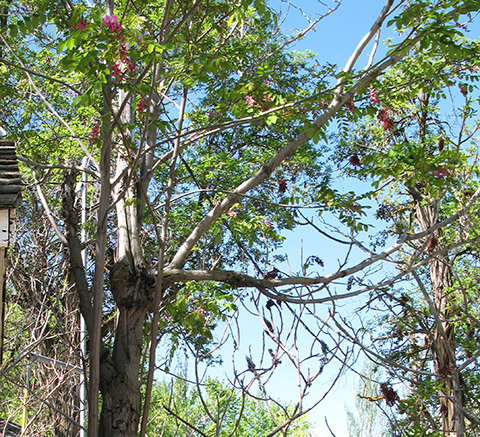
Low-vigor trees, damaged trees, and trees under environmental, drought, or nutritional stress are most likely to be attacked. Trees less than 6 inches in diameter are also susceptible, while healthy trees larger than 8 inches in diameter are generally safe from attacks.
As young larvae bore into wood, they secrete a substance that stains the wood yellow. This stain radiates into the tissue and extends out as the larvae mine further into the wood, eventually turning the wood brown (Fig. 2).
Early-season borer feeding often produces oozing sap and wet spots on the bark. In late summer, larvae produce coarse frass (sawdust-like excrement) that is visible on the bark. As larvae feed and mine new galleries, they destroy portions of the cambium (specialized tissue under the bark).
To heal the injury, the tree grows faster in that area and knotty swellings appear, giving the tree a gnarled look (Fig. 3). Larval tunneling results in broken and dead limbs, weakened trees, excessive sprout production, and even tree death (Fig. 4).
Control
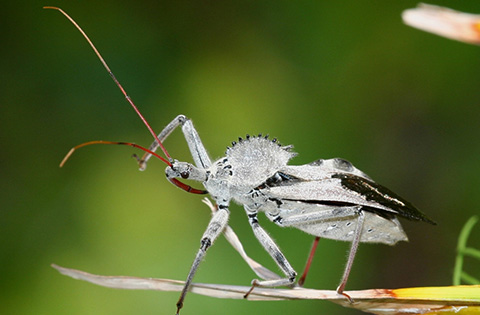
Cultural practices that improve or maintain the vigor of black locust trees will decrease the need for preventive or rescue insecticide applications. Healthy, vigorous trees have little borer damage. In fact, vigorous spring growth kills many larvae, likely due to high sap flow.
Biological Control
The most important natural enemy of the borer larvae is the woodpecker. The downy woodpecker and the hairy woodpecker can consume up to 30% of larvae. An enemy of the adult locust borer is the wheel bug (Arilus cristatus; Fig. 5), a member of the order Hemiptera. This bug uses its piercing-sucking mouthparts to stab the beetle, inject a paralyzing fluid, and then suck out the body fluids.
Chemical Control
If an insecticide spray is required, the spray should be applied to the trunk and larger limbs, thoroughly wetting the bark. The spray targets egg-laying adults and newly hatched larvae. Spray in mid to late August and repeat 1 month later. Treatment timing may vary by location and from year to year.
Recommended insecticides for trunk-spray applications include products containing a pyrethroid or carbaryl. Acephate is an active ingredient insecticide that works systemically and can be injected into the tree. Either option (trunk spray or injection) will require a professional applicator.


